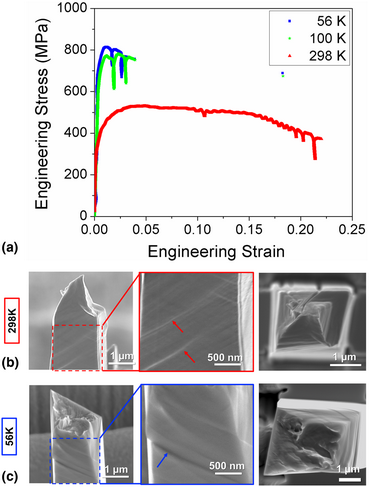Crossref Citations
This article has been cited by the following publications. This list is generated based on data provided by
Crossref.
Sarf, Fatma
Karaduman Er, Irmak
Yakar, Emin
and
Acar, Selim
2021.
Substrate critical effect on the structural and H2Gas sensing characteristics of solution-processed Zn0.075Cu0.025O films.
Materials Research Express,
Vol. 8,
Issue. 12,
p.
126401.
Merle, Benoit
Maier-Kiener, Verena
Rupert, Timothy J.
and
Pharr, George M.
2021.
Current trends in nanomechanical testing research.
Journal of Materials Research,
Vol. 36,
Issue. 11,
p.
2133.
Mardina, Zahrina
Venezuela, Jeffrey
Maher, Christopher
Shi, Zhiming
Dargusch, Matthew S.
and
Atrens, Andrej
2022.
Design, mechanical and degradation requirements of biodegradable metal mesh for pelvic floor reconstruction.
Biomaterials Science,
Vol. 10,
Issue. 13,
p.
3371.
Sousa, Bryer C.
Aindow, Mark
Lee, Seok-Woo
Lados, Diana
Spangenberger, Anthony G.
Sample, Christopher M.
and
Cote, Danielle L.
2023.
Advances in Cold Spray.
p.
205.
Kiener, Daniel
Wurmshuber, Michael
Alfreider, Markus
Schaffar, Gerald J.K.
and
Maier-Kiener, Verena
2023.
Recent advances in nanomechanical and in situ testing techniques: Towards extreme conditions.
Current Opinion in Solid State and Materials Science,
Vol. 27,
Issue. 6,
p.
101108.
Park, Jun Young
Kim, Beom Joon
and
Kim, Jung Gi
2023.
Mechanical Properties of Laser-Powder Bed Fusion Processed Fe-15Cr-6Ni-6Mn Multi-phase Steel at Room and Cryogenic Temperatures.
Metals and Materials International,
Vol. 29,
Issue. 12,
p.
3521.
Sainath, G.
Shankar, Vani
and
Nagesha, A.
2023.
Size effects on dislocation starvation in Cu nanopillars: a molecular dynamic simulations study.
Molecular Simulation,
Vol. 49,
Issue. 18,
p.
1709.
Aragon, Nicole K.
Lim, Hojun
Nguyen, Phu Cuong
and
Ryu, Ill
2024.
Understanding dislocation plasticity of single crystalline Ta micropillars under dynamic loading.
Journal of Materials Research and Technology,
Vol. 30,
Issue. ,
p.
6265.
Ren, Junqiang
Gui, Yachen
Gao, Qing
Wang, Qi
Bai, Yaping
Li, Junchen
Xue, Hongtao
Lu, Xuefeng
and
Tang, Fuling
2024.
Mechanical response and plastic deformation in single- and dual-phase polycrystalline FeNiAl alloys: molecular dynamics analysis.
Journal of Materials Science,
Vol. 59,
Issue. 31,
p.
14405.
Feng, Langlang
Li, Keqiang
and
Peng, Guangjian
2025.
Progress and Prospect of Cryogenic Micro- and Nanomechanical In-Situ Characterization Techniques Based on Electron Microscopy.
Acta Mechanica Solida Sinica,
Vol. 38,
Issue. 2,
p.
229.
Best, James P.
Gibson, James S. K. -L.
Lawrence, Samantha K.
and
Lee, Seok-Woo
2025.
Nanoindentation’s imprint on an advanced society: Toward application conditions at the extremes.
MRS Bulletin,
Vol. 50,
Issue. 6,
p.
695.
Jeon, Yang Bae
Sim, Gi-Dong
and
Choi, Jae-Hoon
2026.
Finite element buckling analysis for micro structures based on the couple stress theory.
Thin-Walled Structures,
Vol. 218,
Issue. ,
p.
114023.



